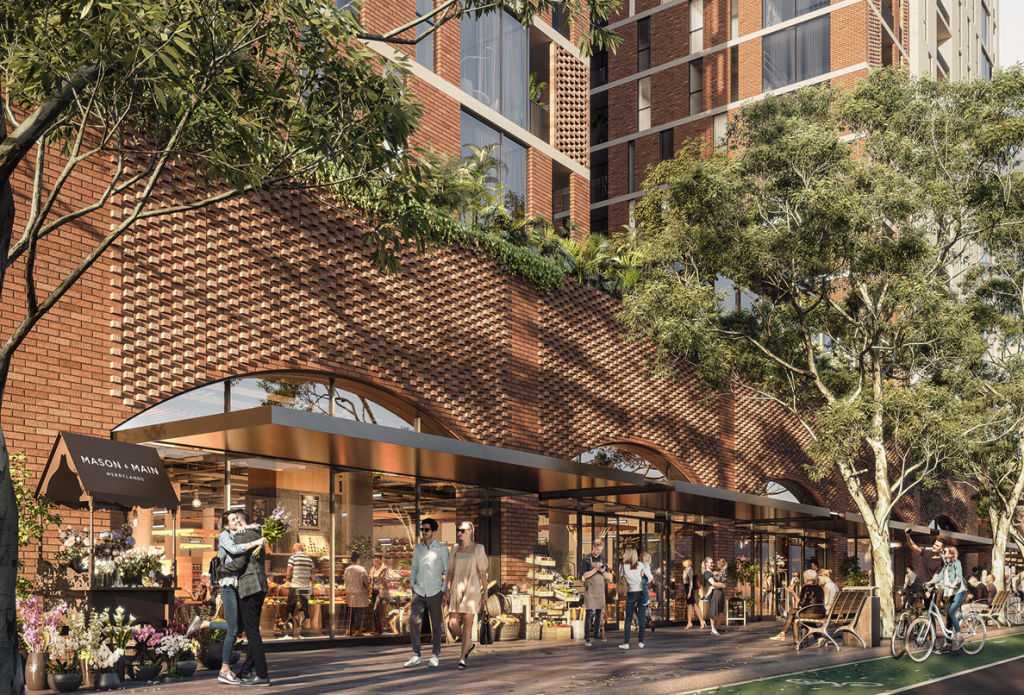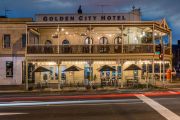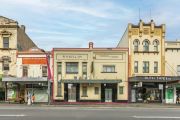
High streets are back in fashion as shoppers look to stay local
High street shopping is back in fashion as consumers return to their local strips following the easing of pandemic restrictions in most states, preferring to stay close to home and shunning big malls.
This comes as state and local authorities announce plans to rejuvenate these high streets, and developers make them the focus of new housing projects.
Paul Zahra, chief executive of the Australian Retailers Association, said high streets had been the big winners at a time when CBD retail was suffering from having no tourists and people working from home.
“With many Australians staying close to home, shoppers have rediscovered some of the great stores they have in their own backyard,” he said. “Suburban strips have seen strong foot traffic, which is a must for driving sales – particularly for discretionary retailers.
“It might be too early to call it a revival, but there is definitely anecdotal evidence of a resurgence which we hope will continue. We encourage shoppers to get out and support their local retailers in any way they can.”
And this high street bounce back is fuelling predictions of bumper Christmas spending.
The National Retail Association is expecting consumers to splash $52.4 billion nationally in the pre-Christmas period, a 5 per cent increase on last year.
Spending in Victoria is tipped to be up 12 per cent on 2019, at $13.8 billion, NSW will be up 5 per cent at $16.7 billion, and Queensland’s $10.6 billion would be a rise of 6 per cent.
“Consumers prior to COVID had been going to big centres, but now they’re concerned about social distancing and wanting to stay in their local areas,” said the association’s chief executive Dominique Lamb.
“They’re also saying they’re enjoying engagement with retailers and, when they see shops and restaurants that haven’t survived, they’re really concerned with keeping the rest in their local area going.”
Each state’s major high streets have been performing strongly once lockdowns eased. In Sydney, these include Crown Street in Surry Hills, Beamish Street in Campsie, the Corso Manly, and King Street in Newtown.
Daniel Hill, at the Committee for Sydney, says in a new report, Reclaiming Sydney’s High Streets, these shopping strips are vital to the survival, and health, of areas.
“Our local high streets are the beating heart of the community,” he said. “When Sydney was originally built, virtually every neighbourhood had a local shopping street, and this helped to define so many of Sydney’s neighbourhoods.
“We celebrate these streets for everything they can offer – convenience, amenity, and the simple pleasures of walking around and people watching. But at times they have been abused, neglected, and degraded by poor traffic management and planning decisions.
“That is why we are calling for the revival, reclaiming, and revitalising of Sydney’s high streets and turning them back into a cherished part of daily life.”
On November 12, the NSW government announced a $15 million initiative to support economic recovery with a grants program to “restore vibrancy to high streets and villages”.
The Your High Street program provides councils with up to $1 million to fund or co-fund projects such as outdoor dining spaces, wider footpaths, tree planting, traffic calming, lighting and public art.
“Thriving local high streets have always been important to community health, well-being and prosperity,” said NSW Planning Minister Rob Stokes, when he announced the scheme. “The pandemic has exposed just how vital public spaces are to our local communities and economies. More and more people are staying local and loving it.”
In Melbourne, the standout shopping strips have been Church streets in Brighton and Cremorne, High Street in Armadale and Hampton Street, Hampton, said Zelman Ainsworth, head of Victorian retail leasing at agents CBRE.
“A lot of people have realised that experience is everything, and that’s a strength of the high street,” he said.
”They can also control some of the COVID elements well. People are now enjoying the outdoor space even more, and a lot of retailers are doing well at optimising that factor by selling outside as well and having outdoor dining. Many are also using online shopping to tap into bigger markets, with deliveries out the back, while re-engaging with customers at the front of the store.”
In Brisbane, high streets such as Caxton Street in Paddington are bustling, as is James Street in Fortitude Valley, said the National Retail Association’s Ms Lamb.
‘Creating more character’
Developers of new housing are now even keener to integrate their projects into high streets. So when architect Domenic Alvaro from Woods Bagot was hired to design Mason + Main – 346 apartments in two new towers, one of 24 levels and the other of 15 – in Merrylands, near Parramatta, the opportunity to breathe fresh life into the high street they sat on was a major attraction.
As a result, it’s being designed with an eat street – with a providore and cafes – on a laneway leading into the high street, and extra retail through large arches opening onto the street, to complement the stores that are already there. High streets need plenty of locals as much as locals need high streets, is the thinking.
“We’re responding to the community character and local context and recognising the importance of liveability,” said Mr Alvaro. “The whole concept is community integration with medium-density housing.
“We’ll be helping with the revitalisation of the high street and creating more character with the connective laneways offering more amenity. The high street there is, I think, quite eclectic, but it needs more residential and densification. The more people in and around the high street, the better. They’ll prove the catalyst for rejuvenation.”
Coronation’s director of urban transformations Aras Labutis has noticed “a big shift back to the high street”.
“I think people want the authenticity they offer, they like going to shops where the shopkeeper knows their name, and it’s a lot more personal than getting lost in a big mall.
“And we’ve changed the way we shop now. It’s no longer about going on a big shop once a week; it’s now going out every couple of days for really fresh, local produce.”










